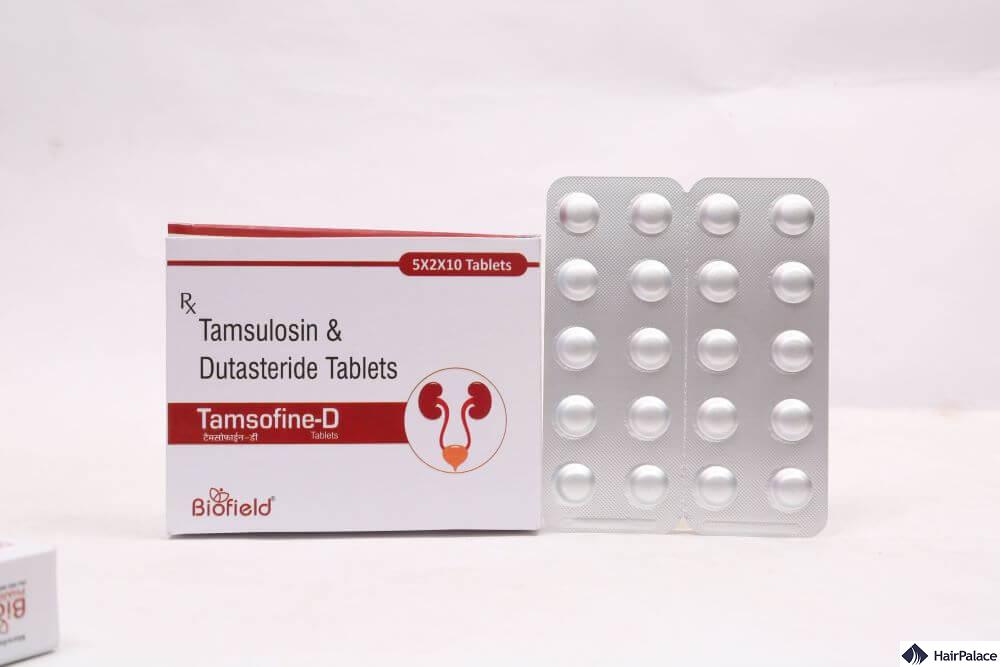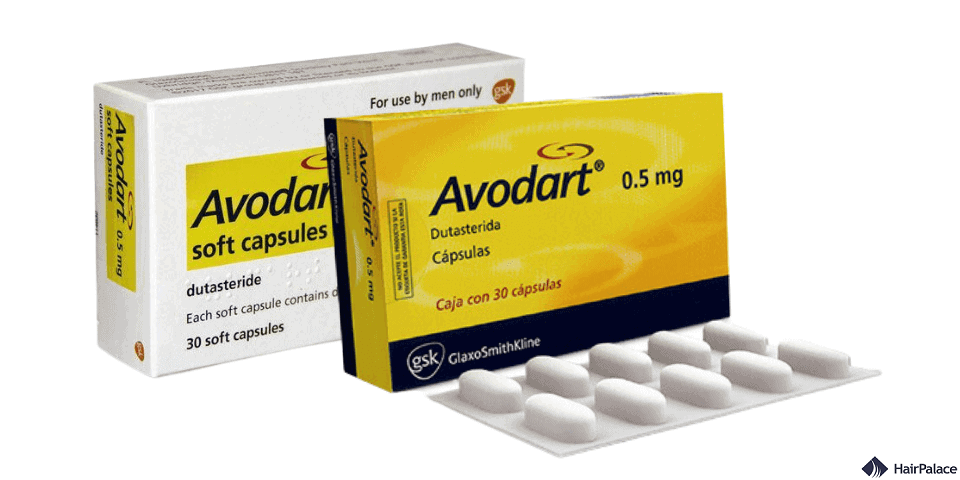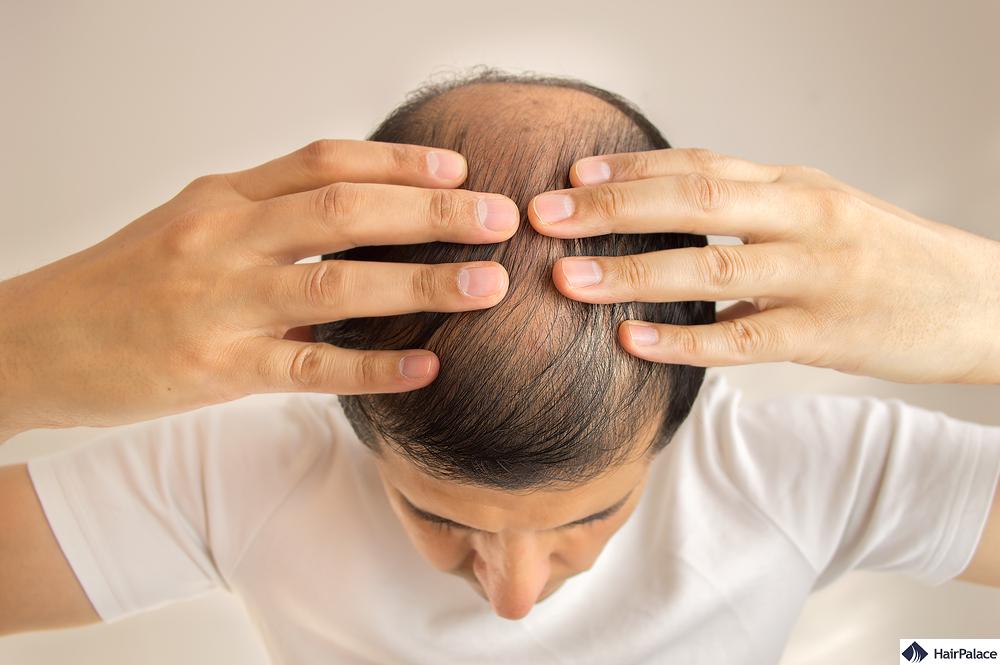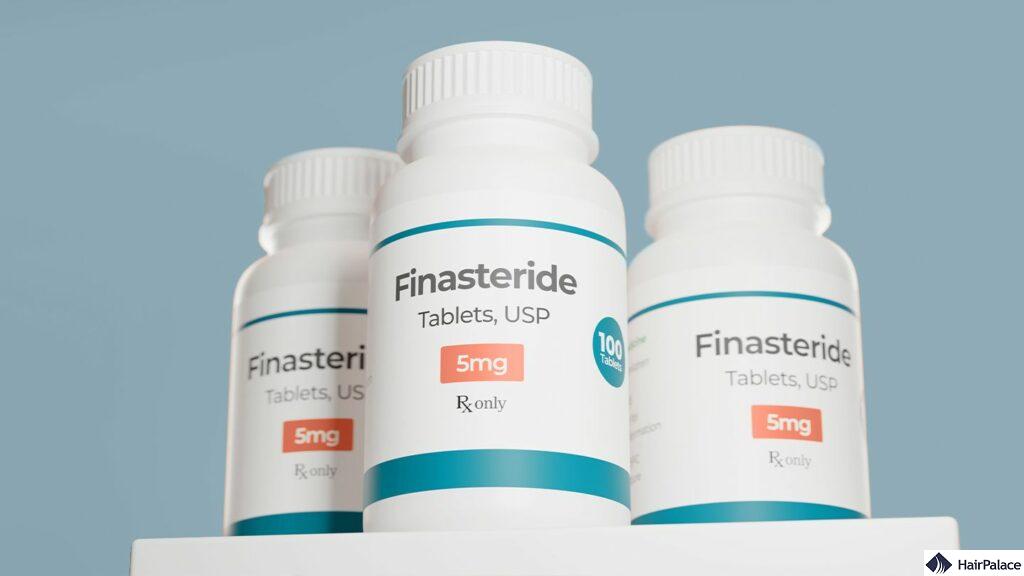Dutasteride for hair loss

Dutasteride for hair loss is one of the most rapidly emerging treatments for hair loss used by men worldwide.
When it comes to treating male pattern baldness, few medications are as potent in restoring hair growth as Dutasteride.
Originally developed to treat prostate enlargement, Dutasteride has gained attention in recent years for its ability to combat androgenetic alopecia effectively.
Dutasteride offers a promising option for those who haven’t responded well to traditional treatments like finasteride.
But how effective is it in preventing further hair loss? And what are the risks?
In this article, we explore the science, results, and potential side effects behind this powerful hair loss treatment.
- What is dutasteride?
- Is Dutasteride for hair loss an effective hair loss treatment?
- Side effects of dutasteride
- Dutasteride vs finasteride
- Dutasteride vs finasteride side effects
What is dutasteride?

Dutasteride primarily treats benign prostatic hyperplasia (BPH) in men as a prescription medication.
It belongs to a class of drugs called 5-alpha-reductase inhibitors.
It reduces DHT levels more extensively than finasteride, making it potentially more effective, but also more likely to cause side effects.
Because of its potency, only a doctor should supervise dutasteride use, especially for long-term hair restoration.
How does dutasteride work?
Dutasteride works by blocking the conversion of testosterone into dihydrotestosterone (DHT).
The enzyme 5-alpha-reductase, in its two forms (Type I and Type II), converts testosterone into DHT.
This reduction in DHT helps shrink enlarged prostate tissue in men with benign prostatic hyperplasia (BPH) and, importantly, decreases DHT levels in the scalp.
DHT binds to receptors in hair follicles, causing the follicles to shrink, shorten their growth cycles, and eventually become dormant.
By lowering DHT levels, dutasteride helps to preserve existing hair follicles and may even reactivate those that have become inactive.
This helps slow down or even reverse the progression of male pattern hair loss.
Is Dutasteride for hair loss an effective hair loss treatment?

Dutasteride 0.5 mg once daily is considered one of the most effective medical ways of treating hair loss, especially male pattern baldness.
Clinical evidence shows that it leads to greater improvements in hair count and density compared to finasteride, the only 5-alpha-reductase inhibitor officially approved for hair loss.
Dutasteride often begins working sooner and maintains its benefits for three to five years in most patients.
Its superior efficacy is due to its ability to block both type I and type II isoenzymes of 5-alpha-reductase, resulting in more than 90% suppression of serum and scalp DHT levels.
In comparison, Finasteride only achieves a reduction of around 60–70%, and only targets type II.
This deeper hormonal suppression more effectively slows follicle miniaturisation and may even reverse it in some cases.
For individuals with male-pattern hair loss who have not seen sufficient results from finasteride, dutasteride represents a logical next step.
However, in many countries (including the U.S. and EU), doctors must initiate dutasteride use for alopecia, since this treatment is off-label.
For those concerned about systemic suppression, topical dutasteride for hair loss is emerging as a promising alternative.
Although its formulations and long-term safety profiles are still under investigation.
Side effects of dutasteride

Dutasteride, while effective for treating hair loss and benign prostatic hyperplasia (BPH), can cause side effects, especially related to hormones.
Patients commonly report these potential side effects of dutasteride for hair loss:
- Decreased libido (reduced sex drive)
- Erectile dysfunction (ED)
- Reduced semen volume or altered ejaculation
- Breast tenderness or gynecomastia (breast enlargement in men)
These effects often occur within the first 6 months of use and may resolve after discontinuation, but in some cases, they can persist longer.
Less commonly occurring side effects include:
- Depressed mood, anxiety, or emotional blunting
- Testicular pain
- Allergic reactions (e.g., rash, itching, swelling)
- Dizziness or fatigue
Dutasteride carries some important precautions that users should be aware of when treating hair loss.
First, it is teratogenic to male fetuses, meaning it can cause birth defects if absorbed by pregnant women.
For this reason, women suffering from female pattern hair loss are generally advised against dutasteride treatment.
Additionally, the medication significantly lowers prostate-specific antigen (PSA) levels—by about 50%—which can interfere with the early detection of prostate cancer.
Doctors must adjust PSA readings accordingly when monitoring patients taking dutasteride.
Finally, although rare and not fully understood, some men have reported persistent side effects such as sexual dysfunction, mood changes, or cognitive issues even after stopping the medication.
This phenomenon, sometimes referred to as post-finasteride syndrome, is still under investigation, but it’s something users should monitor and discuss with their healthcare provider.
Dutasteride vs finasteride

Let’s compare dutasteride versus finasteride to get a better idea of their effects on male pattern baldness.
Both work by inhibiting the conversion of testosterone into dihydrotestosterone (DHT), the hormone responsible for shrinking hair follicles and disrupting the hair growth cycle.
While they share a similar mechanism and both work effectively against androgenetic alopecia, they differ significantly in potency and scope.
Finasteride selectively blocks the Type II form of the 5-alpha-reductase enzyme, reducing DHT levels by approximately 60–70%.
In contrast, oral and topical dutasteride inhibits both Type I and Type II enzymes, leading to a more complete DHT suppression of over 90% in both the bloodstream and the scalp.
This makes dutasteride the more potent option, and clinical studies have shown it to be more effective at promoting hair regrowth, particularly in men who did not respond well to oral or topical finasteride.
Finasteride (1 mg/day) is FDA-approved for treating hair loss and is widely used as a first-line therapy.
Dutasteride (0.5 mg/day), while not officially approved for treating male pattern baldness in most countries, is used off-label with growing evidence supporting its superior efficacy.
However, as it’s a stronger DHT blocker, it may come with a slightly increased risk of side effects, though it remains well tolerated by most users.
As a result, dutasteride is generally recommended over other hair loss treatments when finasteride proves ineffective or poorly tolerated.
Dutasteride vs finasteride side effects

Both finasteride and dutasteride work by reducing levels of dihydrotestosterone (DHT), the hormone linked to hair loss and prostate growth.
While effective, this hormonal action can lead to side effects, especially in sensitive individuals. Here’s how the two medications compare in terms of side effects:
These are common to both medications, though they may occur slightly more often with dutasteride:
- Decreased libido
- Erectile dysfunction (ED)
- Reduced ejaculatory volume
- Delayed ejaculation
- Breast tenderness or enlargement (gynecomastia)
- Depressed mood or anxiety (rare)
Dutasteride is more potent than finasteride, which may increase the risk or duration of side effects.
Its long half-life of 4–5 weeks means that any side effects can persist longer after stopping the medication.
In contrast, finasteride has a much shorter half-life, so if side effects occur, they typically resolve more quickly once the drug is discontinued.
FAQ
Dutasteride typically starts showing visible results after 3 to 6 months, but full effects can take up to 12 months. Consistency is key for noticeable improvement.
Most commonly, dutasteride is taken once daily at a dose of 0.5 mg. Always follow your doctor’s guidance for personalized dosing.
Dutasteride requires a prescription in most countries, so you’ll need to consult a doctor or dermatologist. In some regions, it may be prescribed off-label specifically for hair loss.
The typical dose for hair loss is 0.5 mg per day. Higher doses are not usually recommended due to increased risk of side effects without significantly better results.
Dutasteride is a 5-alpha-reductase inhibitor that reduces levels of DHT, the hormone responsible for shrinking hair follicles in androgenetic alopecia (male pattern baldness). It’s more potent than finasteride and blocks both Type I and Type II DHT-converting enzymes.


